Way to make a Travel > World Tours > Little Tropical piece of Europe
FORT-DE-FRANCE, MARTINIQUE – Arriving in Martinique is like taking a big step into Europe, spiked with a large dose of Caribbean flavour.
Language and currency in Martinique
Strange as it may seem, arriving here means that you are entering the French Republic and visiting a far-fluent corner of the European Union, where the local currency is the euro, and the people speak French. French is the primary language spoken on Martinique but English is widely spoken in most major tourist areas. Euros are used in Martinique while US dollars generally aren’t accepted except by a handful of taxi drivers near the cruise terminal who cater specifically to the cruise passengers.

It may not feel much like it to begin with, but, this Caribbean island politically and constitutionally are part of France. Since 1946, when it’s people voted to become an overseas department, Martinique, like Guadalupe, has been a little tropical piece of Europe. Its people are French citizens, enjoying the same rights as any other ‘citoyens’, and in many face just act like their European compatriots, but with one major exception – they are also Caribbean.
History of Martinique
Martinique’s New World history began in 1502, when Christopher Columbus landed on the island. The French claimed the island in 1635 for 180 years, ownership between France and Britain before the former took hold for good in 1815. Martinique became a region of France in 1974.
The Empress Josephine Napoleon Bonaparte’s first wife, was born in Martinique in 1763. It is believed she was behind her husband’s decision to reinstate slavery in 1802, after it had been abolished during the French Revolution.
As you travel about the island you will notice how European it is, compared with other islands, the well-maintained roads, signs and industrial zones the villages and towns with their churches, squares and town halls. But, the difference is that they are centred around a bay, edged with black beaches the further north you go, and white beaches to the south. The church and square lead onto a promenade and jetty jutting out into the bay, where each fishing community hauls in their catch and sells it in the beachside pavilions. Here you can hear the locals discussing the state of the world in Creole, a French – based dialect.
Many cruise ships arrive in Fort-de-France, the islands main port and capital, a city of more than 200. 000 inhabitants. Some dock in the commercial port, to the east of the city, and in-attractive expanse of wharves, cranes and modern buildings.

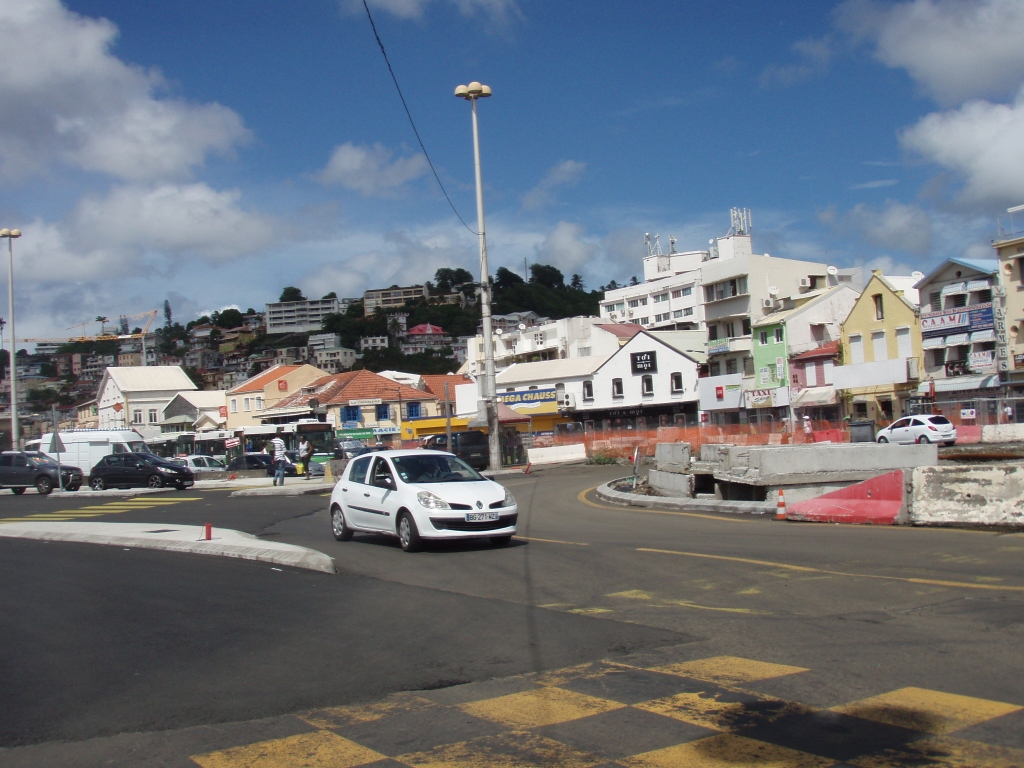

Getting around Martinique
Fort-de- France itself is a walkable harbour front city. You can walk to the city from your hotel, just follow street signs pointing to ” centre de ville”. Depending on the traffic, using a taxi ride, you can reach in a matter of minutes in the bustling and unmistakably French West Indies, flavoured shopping streets of ”the tropical little piece of Europe”. There is little to keep you at your hotel and it is better to head straight out on to Boulevard Alfassa, the road running parallel to the waterfront, where you will find plenty of public minibuses to take you to different parts of the island. Martinique is a sprawling island, and it’s simply to vast to cover everything in a day. Touring Fort-de- France and indulging in one of those great three-hour French-style boutiques to open-air markets.
Like most Caribbean travel destinations Fort – de – France has had its fair share of fires, earthquakes and other natural disasters, so there are many modern structures among the most interesting 19th century buildings.
What hasn’t changed, however, is the greed of narrow streets, which are constantly jammed with traffic. Numerous small boutiques selling the latest Paris fashions are tucked between shabby shops offering local crafts and commodities. Crossing the pedestrianised rue de la Republic and rue Victor Schoelcher is rue Victor Hugo, where a couple of small shopping malls offer an impressive array of designer perfumes and clothing. Elsewhere, you will find good- quality jewellery, glassware and paintings.










The centre of Fort-de-France can be explored comfortably on foot in a couple of hours, and there will still be time for a leisurely meal at one of the city’s many excellent restaurants. One of my favorites, ‘accras’, – deep-fried fritters stuffed with prawns or salted cod.
No French town would be worth it’s salt if you didn’t have a market or two, and Fort-de-France has its share. The busy open-air markets, which operate all day everyday, are most colourful on Friday and Saturday. The fish market takes place from early in the morning until dusk on the banks of the Riviere Madame, a 15-minute walk north of the Pointe Simon ship terminal. There, and in the adjacent fruit and flower market, you will be dazzled by the high decibel sounds of the Creole patter, smells and colours, all of which testify to Martinique’s exalted culinary reputation. The nearest market to the shore, the Grand Marche, has a few vegetable stalls and vendors in Martinique dress, mostly selling crafts, spices and souvenirs.
Places to visit in Martinique
Occasional buildings stand out as a reminder of Martinique’s long French history. Some houses have ornate gingerbread fretwork, a style imported from Louisiana in the 19th century, intricate wrought ironwork and pretty pastel colours.
Most eye-catching, perhaps, are two buildings credited to the architect Henry Pick, a contemporary of Gustave Eiffel and, some claim, the true designer of the Eiffel Tower.
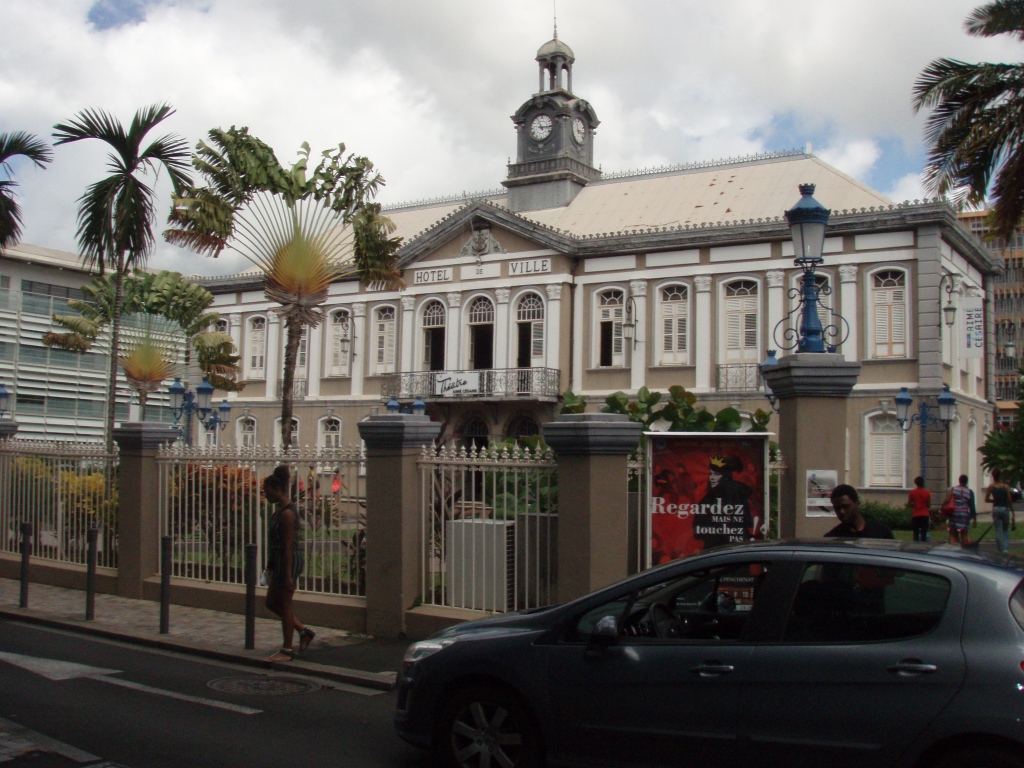

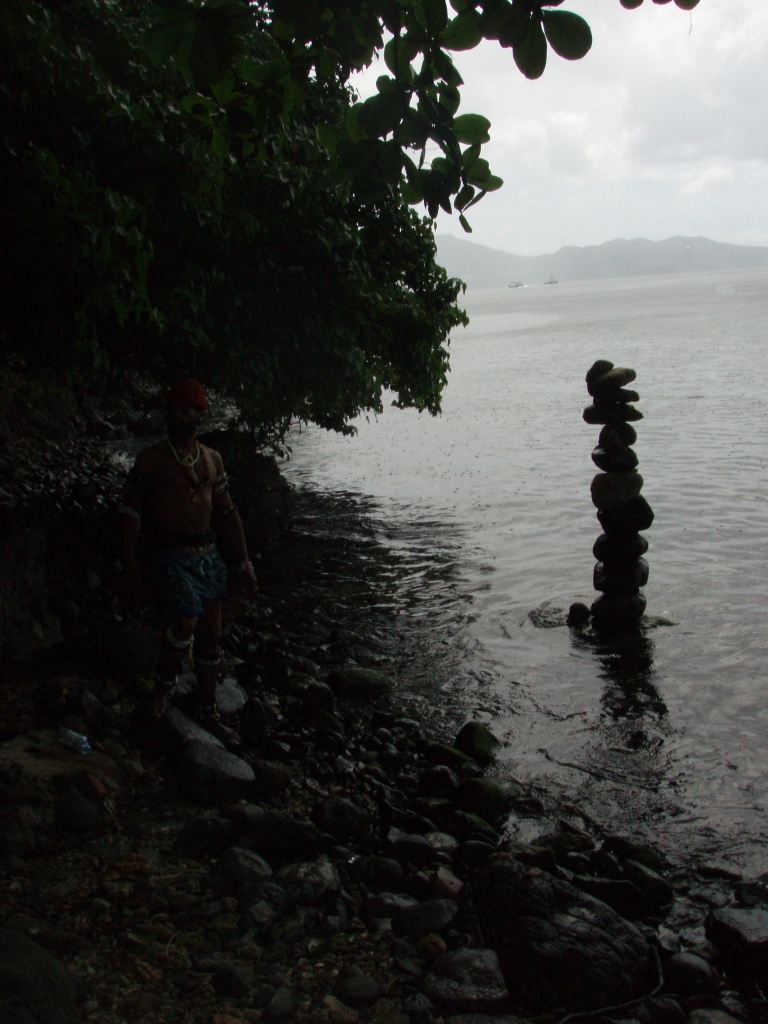

St. Louis Cathedral in Martinique
The Romanesque style St. Louis Cathedral, on rue Schoelcher, hints at the architect’s love affair with metal girders and joists, its steel-reinforced spire rising 60 metres into the sky. Built in 1895 to withstand any earthquake, this strange blend of tradition and innovation, known as the ‘Iron Cathedral’, has a cool interior and fine stained-glass windows.
The Bibliotheque Schoelcher
A couple of streets further east stands Pick’s other lasting contribution to the capital’s exotic architectural heritage. The imposing library, ‘the Bibliotheque Schoelcher’ is a spectacular bland of Romanesque Byzantine and Egyptian influences, again dominated by prefabricated cast-iron and steel features. With ornate gables, a large glass dome and coloured metal panels, this is a truly unique building, lit up at night and decorated with clusters of French flags and exotic tropical trees. The library, designed by Gustave Eiffel, after whom the Eiffel Tower was named, was built for the Paris Exposition of 1889. In 1895, it was shipped, piece by piece, to Fort-de- France and reassembled.
Out of the library windows you can see Fort-de-France’s ‘green lungs’ the large expanse of grass, palms and tamarind trees known as ‘la savane’ that contains the city centre to the east. Traditionally the place for sitting, gossiping and whiling the hours away, you can browse through the collection of T-shirts and mass-produced Haitian style paintings in the covered craft market opposite the waterfront or just sit on one of the benches and watch the coming and going of local ferries that set off from the nearby pier. Also in the gardens is a statue of Pierre Belain, who claimed the island for France in 1635 and founded the original fort in St. Pierre.
Fort-de-France fortress
As you arrive in Fort-de-France, you cannot miss the impressive bulk of Fort St Louis fortresses. The citadel has been continuously occupied by the French military since the mid 17th century. One interesting feature is it unusually low ceilings, reputedly design to deter attacks from taller British troops in the era of Inter-european rivalry. The English were welcome invaders during the French Revolution, invited by the Martinican planters, which meant that the Reign of Terror was kept off the island, unlike Guadeloupe.



Town of Saint Pierre
Perhaps the most evocative site in Martinique is the town of St. Pierre, situated on the northwest coast under the brooding volcano, Montagne Pelee. In May 1902, this volcano erupted, killing all but one, (he had been thrown in jail the night before for drunkness) of the towns 30000 inhabitants and devastating what was known as the ‘Paris of the Antiles’. Many of the ruins of this sophisticated and fun-loving place, such as its grand theatre and main church, lie just as they have for more than a century. A new town has grown up through the rubble of the old, with cafes and restaurants along the black sand beach and smart promenade, to refresh the curious visitor. There is a restored covered market on the waterfront and the local tourist office organisers festinating tours on the historic ruins the music work analogue but as graphic images and artifacts such as a church bell twisted by the heat of the volcano from before and after the cataclysm and explain how modern science has made a repetition of the disaster impossible.




Popular excursions in Martinique
Martinique is not a large island, but it is clearly impossible to see everything in the space of a few hours. Most island excursions involve a trip to a rum distillery, to some beautiful botanical gardens or to the historic town of St. Pierre, victim of the 20th century worst volcanic disaster. All these are definitely worth doing, although the expedition to St. Pierre takes the longest.
Destillerie Depaz
Martinique is dotted with sugar plantations and rum distileries, producing the world famous ‘rum agricole’, a white rum made from sugarcane juice rather than molasses. Most are open for free visit, but you will be encouraged to taste and buy some of the potent liquor.
The Destillerie Depaz, north of St Pierre, offers a well market trail through each stage of rum manufacturing.

Jarden de Balata
Those more interested in tropical flora should take a tour to the Jarden de Balata, on the step, twisting Route de la Trace, which cuts through the rainforested mountains north of Fort-de-France to La Morne Rouge. At their best after the rainy season at the end of the year, these gardens have a stunning collection of flowers, exotic trees and shrubs. Nearby, the Eglise de Sacre Coeur is a smaller but almost exact replica of the Parisian original, standing among tropical foliage with spectacular mountain views.
Alternatively, have a drink or meal at one of the hotels or restaurants along the rue De La Liberte, next to La Savane.
Trois Ilets Ponte du Bout
Taking the ferry from the waterfront near the cruise terminal, which has decent beaches like Anse- Mitan and Anse-a-l’Ane, as well as a St. Tropez ambience, visitors can reach to the center of some of the island’s major resorts, such as Kalenda Les Trois Ilets Resort Hotels and Hotel Bakoua. The atmosphere with its cafes and shops, will remind you of the South of France.
The Hotel La Batelière is located in the center of Martinique, near the capital Fort-de-France, and is surrounded by lush foliage, palm trees, and turquoise blue waters. Hotel interior combines Creole charm with modern luxury with offer of numerous business and leisure activities.
Beaches in Martinique
All of the beaches in Martinique are public. We have divided the best beaches in Martinique into several categories.
Beast beaches in Martinique for a half-day visit
- Anse-Mitan and Anse-a-l’Ane in Ponte du Bout offer a relaxed atmosphere and in town you’ll find lots of cafes and shops if you get tired of sand and sun.
Beast beaches in Martinique for Naturalists
- Les Sailines in Sainte Anne, on the island’s southern tip, is great for people watching.
- Nearby Pointe Marin there is also a gorgous beach that attracts lots of locals.
Beast beach in Martinique for Seclusion
- Madiana Plage beach, in the town of Schoelcher, is small, quiet and generally not crowded beach. There you’ll find restrooms and outdoor showers for rinsing off sand after swimming, paddleboarding or kayaking.
Beast beach in Martinique for Laid back Party Vibe
- Le Coin beach in the town of Le Carbet, about a 30 minute drive or taxi ride from Fort-de-France, is ideal for those who enjoy music, topless sunbathing and fruity cocktails. Water sports are also offered, and bathrooms and restaurants are right on the beach.
Beast Black-sand beach in Martinique
- Enjoy volcanically produced black sand at the beaches of La Raisinier in Le Carbet, a 40 minutes ride or drive from Fort-de-France. Look around and you’ll see Mt. Pelee towering above in the distance. The beach is long and winding, bumping up against the coastal road, which can be busy at times. There are virtually no amenities.
Louisa_M, Mar 2024
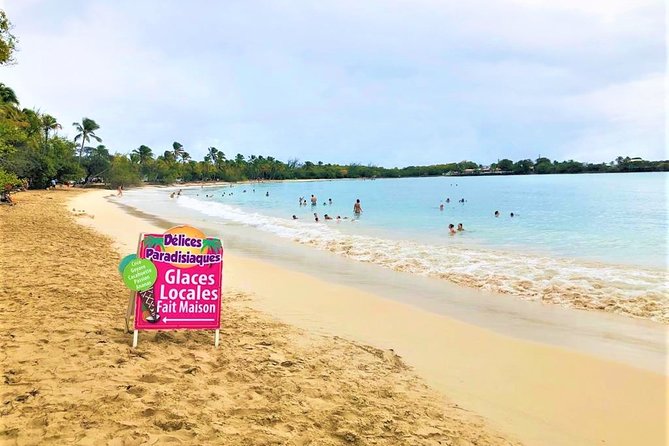
”The trip was amazing! We were welcomed at the harbor. Manuel is a very great tour guide. he showed us many places, he was very attentive. We would definitely recommend the tour, especially. with Manuel as tour guide. Keep it up 👍🏻” – read more about Rum and Salines paradise beach –
Dining out in Martinique
Traditional food on Martinique is split between Creole and French. Menus feature lots of Caribbean dishes that incorporate fish, chicken, seafood and fresh fruits and vegetables, but you’ll also find more French-inspired cuisine, including foie gras and boudin noir (blood sausage). If you try one local dish while you are in town, make sure it’s accra (cod fritters). We recommend a list of renown restaurants tomaximaze your dining expereince while in Martinique.
Le Cave a Vins
If you want to feel like you’re in France, this is the best place in town. It’s part wine store, part restaurant. Its chef, who hails from the south of France, has been in Martinique for nearly 20 years. The menu features duck, fresh fish, and foie gras, and the tarte tatin (124 Rue Victor Hugo, Fort-de-France, open for lunch daily except Sunday and Monday from noon to 2 pm)
Le Marine
Located right at the marina in Troisd Ilets, La marine offers both French and Creople dishes, as well as options for less adventurous palates. It works well for anyone looking for an affordable bite in a casual atmosphere (Pointe du Bout Marina, 97229 Trois Ilets, open noon to 11 pm)
Chez Carole
At the back of the open-air market in Fort-de-France, you’ll find Chez Carole, a tiny stand where a local woman named Carole makes some of the best accras on the island. You can also choose from a variety of other Creole dishes (Fort-de-France open-air market, corner of Rue Blenac at Rue Anotine Siger, open Monday to Saturday, 7-3:00 pm)
Le Petibonum
For a low-key lunch right on the beach, check out this bar-restaurant, which specializes in Creole dishes like Colombo (curried meat) and crawfish. It’s also got the perfect atmosphere for enjoying a drink made with local rum. Renting equipment is available *Le Coin beach, 97221 Le Carbet, Tuesday to Sunday, noon to 3:00 pm)
Booking hotel in Martinique
Martinique’s beautiful hotels welcome you to an extraordinary voyage in the heart of the Caribbean for authentic Caribbean pleasures.
Hotels in Martinique welcome you to enjoy the island’s treasures and beauty, whether you’re with family or friends, business visitors, or joyous adventurers. Lush gardens, vivid bougainvillea’s, palm-fringed beaches, sparkling sea, sun, and stunning scenery provide an idyllic setting for your visit. Breakfast, half-board, à la carte meals, and rental packages round out the menu.
Truly eco-friendly beach vacations no longer involve treading lightly or simply leaving footprints in the sand. If you truly want to make a difference when you travel, especially in coastal areas, selecting actively sustainable hotels that make a conscious, ongoing effort to balance elegance with longevity is more than a drop in the ocean. From reef restoration to plant-your-own coral projects, these Considerate Collection resorts are pushing beyond the surface of sustainability to conserve the planet’s most valuable natural resource, all while encouraging visitors to make real changes during their stay (and beyond).
Rooftop pools, a perennial Instagram favourite, continue to dominate social media. And, whether you come to take photos or to swim, there’s something inherently wonderful about a rooftop pool. Explore our finest rooftop pool selections, featuring swim-up bars and cloud-level baths.
The 3-star Karibea Valmenière Hotel in Fort-de-France, Martinique, is conveniently located near the airport and offers easy access to the city’s business sectors, tourist sites, and attractions.
Great location – friendly staff – Excellent stay – Booking hotel in Martinique by Trivago


👉For latest holiday best hotel offers in Martinique visit our Partner booking links here⤵️
🌐 HOTELS IN MARTINIQUE BY TRIVAGO
Promotion:



Keywords: #fort-de-france #dining in martinique #beaches in martinique#history of martinique #places to visit in martinique #martinique #french island in the caribbean #travel to martinique @booking hotel in martinique #french #LaMorneRouge #way to make a travel @bhimartinique @waytomakeatravel
Other simiar stories: Cozumel and east mexican coast Caribbean Virgin Gorda X-caret
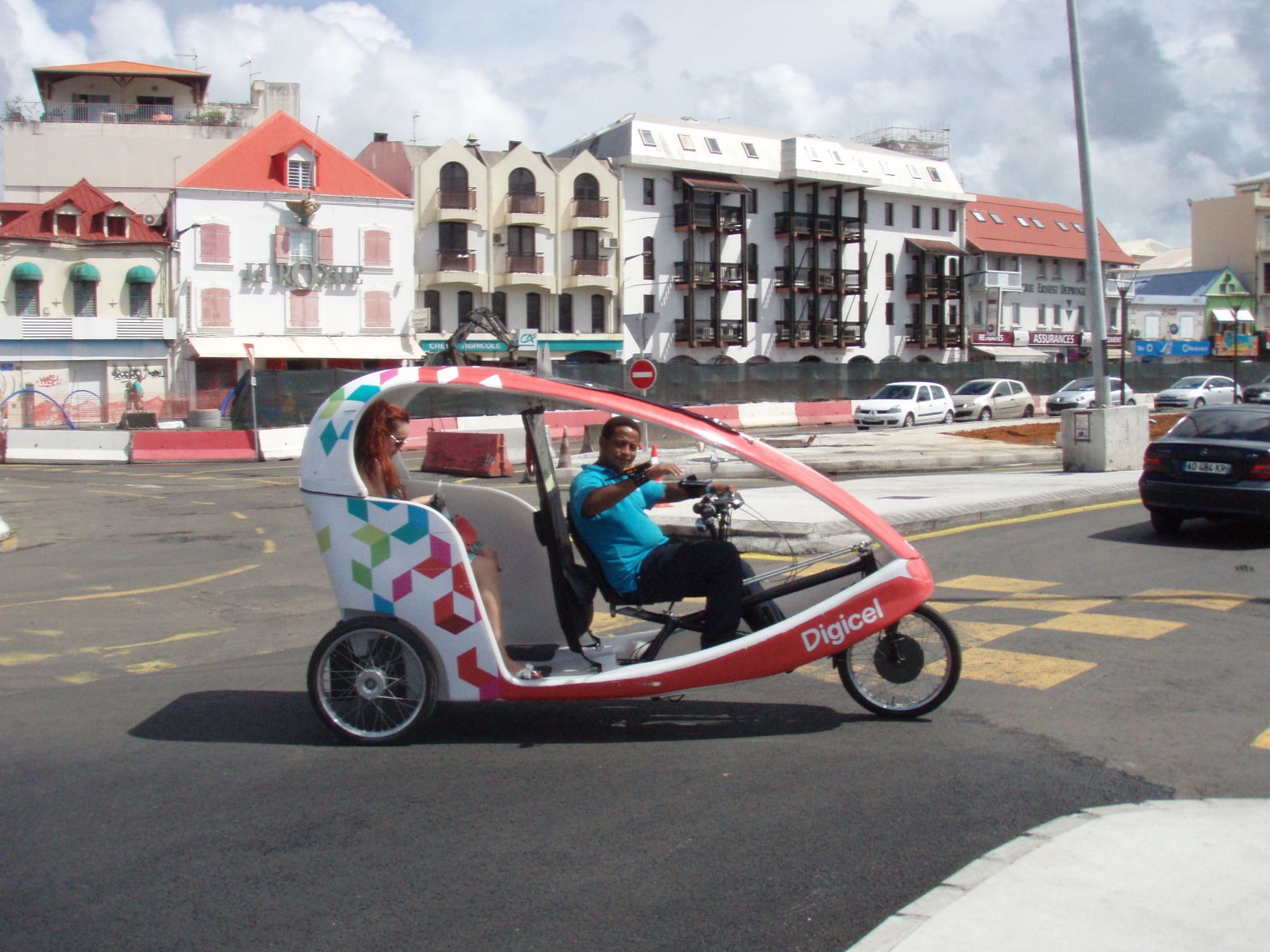
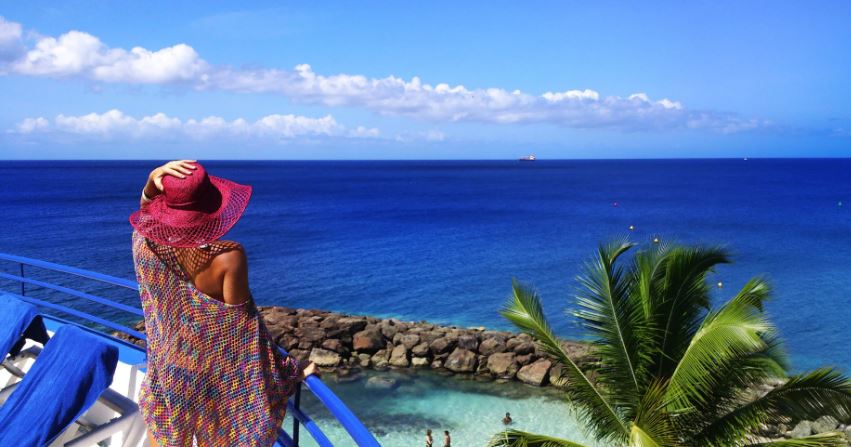

2 thoughts on “Little Tropical piece of Europe”